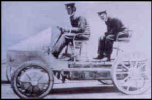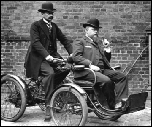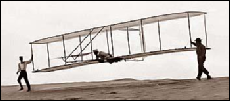























Modern processes such as the Injection moulding of various plastics, metals, & ceramics has increased the range of possible shapes that can be produced to make more interesting and efficient products. Applications for precision components constantly increases - as does knowledge of how materials respond to stresses.
Make sure that you have read the criteria for marking the exam work. Your teacher will give you the details but you should remember that there are several specific points that you are expected to cover in any project. You will have been working to a BRIEF since the first time you worked in the subject... we set you a task and so give you a BRIEF. You then RESEARCH what is necessary to design and make the item/task well. These two sections usually attract 4% and 12 % of the total marks. When you have come up with several IDEAS (as many as you sensibly can) (14%) you will be expected to choose, draw and detail the features of the idea. You should then improve it.(DEVELOPMENT). These two sections have each earned another 14% of the marks. Now you need to make the item (after PLANNING) and that will get up to 48%. Finally you should make sure you TEST & EVALUATE (8%) your work and suggest ways that you would change things, manage your time, plan, choose different/improved materials, etc. if you were to do it all again.
As ‘Engineering / Industrial Production’ uses metals and plastics (polymers) check out that page for information on other materials now!
Engineers build bridges (and tunnels) successfully by understanding the forces that are experienced by structures. Bridge design tasks help in the understanding of how bridges work.
Make sure that you have read the criteria for marking the exam work. Your teacher will give you the details but you should remember that there are several specific points that you are expected to cover in any project. You will have been working to a BRIEF since the first time you worked in the subject... we set you a task and so give you a BRIEF. You then RESEARCH what is necessary to design and make the item/task well. These two sections usually attract 4% and 12 % of the total marks. When you have come up with several IDEAS (as many as you sensibly can) (14%) you will be expected to choose, draw and detail the features of the idea. You should then improve it.(DEVELOPMENT). These two sections have each earned another 14% of the marks. Now you need to make the item (after PLANNING) and that will get up to 48%. Finally you should make sure you TEST & EVALUATE (8%) your work and suggest ways that you would change things, manage your time, plan, choose different/improved materials, etc. if you were to do it all again.
As ‘Engineering / Industrial Production’ uses metals and plastics (polymers) check out that page for information on other materials now!
Engineers build bridges (and tunnels) successfully by understanding the forces that are experienced by structures. Bridge design tasks help in the understanding of how bridges work.
Try the following two tasks – firstly download the bridge programme and
experiment with it and then try the Bridge tasks set out here.
experiment with it and then try the Bridge tasks set out here.



The purpose of studying Design & Technology as a subject is to give you an understanding of the way in which people change the world around them to make life easier or more comfortable. This is done by understanding the environment we live in; by inventing, designing, adapting, improving and then again re-designing much of what has gone before. Cars, telephones, and planes are amongst the many products that everyone has seen change however old or young they are. Many other products change constantly too, either to improve the item in the way it feels, handles, or works ... or perhaps to change it simply to make earlier
models outdated and so create a fresh market. Alloys and new plastic materials allow the development of new manufacturing techniques and this in turn allows for greater flexibility in design.
What examples can you think of where this has happened ?
What examples can you think of where this has happened ?
As a simple starting point - Can you name a few different softwoods & hardwoods? Could you name a few uses for them ? Can you name 5 or 6 different plastics and can you name 5~6 different metals that are non-ferrous? Can you list uses for them? Can you name several different manufacturing techniques that could be used to shape materials - (maybe you know a little about their chemistry ) Could you explain the importance of choosing correct speeds for drilling and cutting ? Could you explain what abrasives are used for and how they are graded ?
Knowing about MATERIALS,
In only a little over a hundred years the technology of flight has progressed from man-lifting kites through the early flights of the wright brothers and others, through military powered flight and on to allow civil intercontinental mass transport at prices so affordable that many travellers cover long distances merely for holidays. Each step of this development has relied on the discoveries and understanding of earlier stages in the Design & Invention process. Designers and their designs and Inventors and their inventions as well as Engineers and their engineering creations The ‘Design Cycle’ can be applied to many developments similar to these examples briefly outlined here and relies on gradually gaining more information to improve designs and the materials used in converting them into products and inventions.
Did you know that the distance covered by the early Wright brothers flights was less than the wingspan of a Boeing 747 airliner ?

Use these documents if you cannot link directly to them. Brief Task Workbook
RESISTANT MATERIALS - Link to Main section
RESISTANT MATERIALS -

Why donate ?










